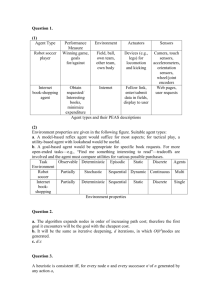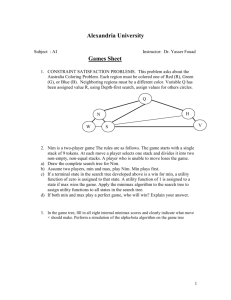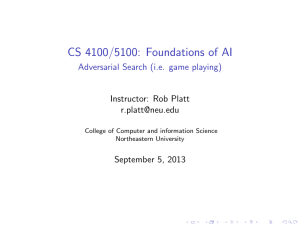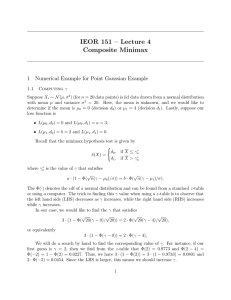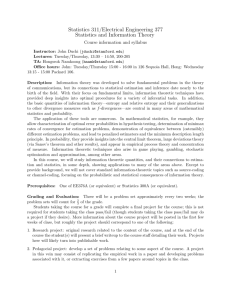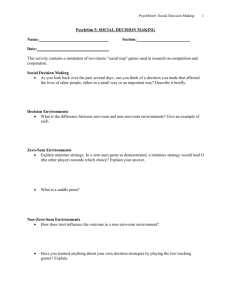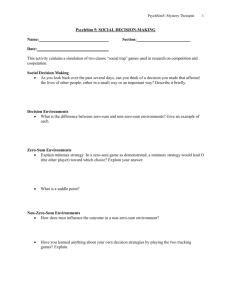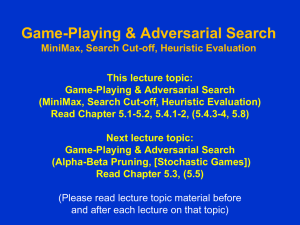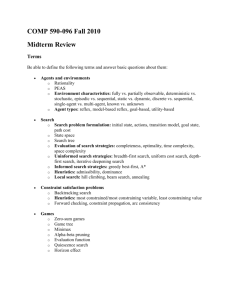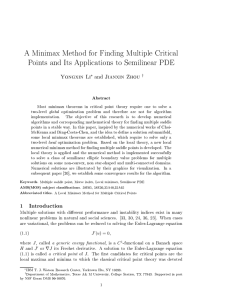The Foundations of Statistics LEONARD J. SAVAGE Late Eugene
advertisement
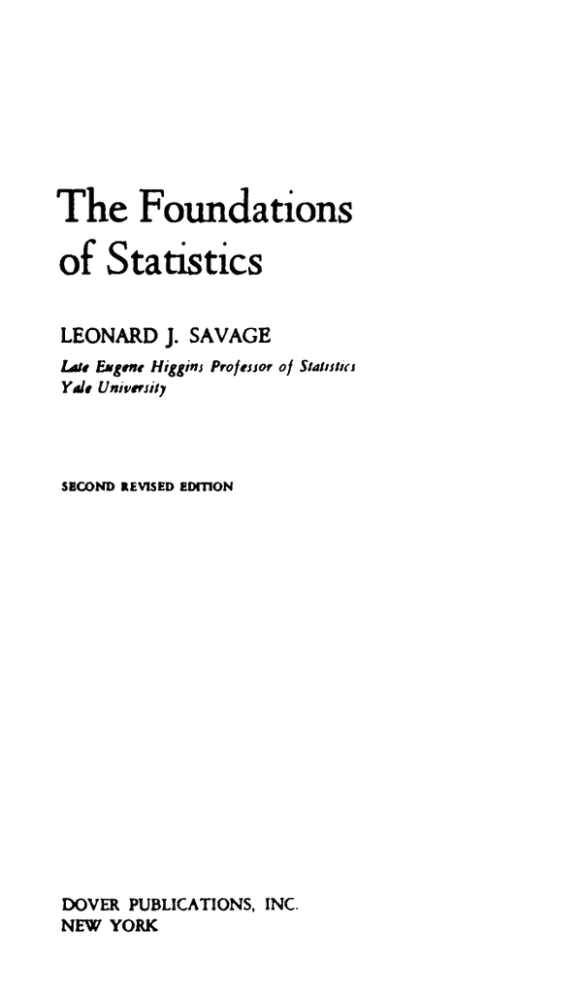
The Foundations of Statistics LEONARD J. SAVAGE Late Eugene Higgins Professor of Statistics Yale University SECOND REVISED EDITION DOVER PUBLICATIONS, INC. NEW YORK Contents Postulates of a personalistic theory of decision End papers 1. INTRODUCTION 1. The role of foundations 2. Historical background 3. General outline of this book 1 1 4 2. PRELIMINARY CONSIDERATIONS ON DECISION IN THE FACE OF UNCERTAINTY 1. 2. 3. 4. 5. 6. 7. Introduction The person The world, and states of the world Events Consequences, acts, and decisions The simple ordering of acts with respect to preference The sure-thing principle 6 7 8 10 13 17 21 3. PERSONAL PROBABILITY 1. 2. 3. 4. 5. 6. 7. Introduction Qualitative personal probability Quantitative personal probability Some mathematical details Conditional probability, qualitative and quantitative The approach to certainty through experience Symmetric sequences of events 27 30 33 40 43 46 50 '. . 4. CRITICAL COMMENTS ON PERSONAL PROBABILITY 1. 2. 3. 4. 5. 6. Introduction Some shortcomings of the personalistic view Connection with other views Criticism of other views The role of symmetry in probability How can science use a personalistic view of probability? • 56 57 60 60 63 67 5. UTILITY 1. 2. 3. 4. 5. 6. Introduction Gambles Utility, and preference among gambles The extension of utility to more general acts Small worlds Historical and critical comments on utility xiii 69 70 73 76 82 91 6. OBSERVATION 1. Introduction 2. What an observation is 3. Multiple observations, and extensions of observations and of sets of acts 4. Dominance and admissibility 5. Outline of the design of experiments 105 106 111 .114 7. PARTITION PROBLEMS 120 Introduction 121 Structure of (twofold) partition problems The value of observation 125 Extension of observations, and sufficient statistics Likelihood ratios 134 Repeated observations 140 Sequential probability ratio procedures 142 Standard form, and absolute comparison between observations . . 148 1. 2. 3. 4. 5. 6. 7. 8. 8. STATISTICS PROPER 1. 2. 3. 4. 154 154 154 154 Introduction What is statistics proper? Multipersonal problems The minimax theory 156 9. INTRODUCTION TO THE MINIMAX THEORY 1. Introduction 2. The behavioralistic outlook 3. Mixed acts A T 4. 5. 6. 7. 8. Income and loss The minimax rule, and the principle of admissibility Illustrations of the minimax rule Objectivistic motivation of the minimax rule Loss as opposed to negative income in the minimax rule 158 159 162 J 1 162 163 ' 164 165 . . • • • 10. A PERSONALISTIC REINTERPRETATION OF THE MINIMAX THEORY 1. 2. 3. 4. Introduction * 172 A model of group decision • ' 172 The group minimax rule, and the group principle of admissibility • Critique of the group minimax rule * 11. THE PARALLELISM BETWEEN THE MINIMAX THEORY AND THE THEORY of TWO-PERSON GAMES 1. 2. 3. 4. Introduction Standard games Minimax play Parallelism and contrast with the minimax theories • • • • * 12. THE MATHEMATICS OP MINIMAX PROBLEMS 1. Introduction 2. Abstract games l84 l84 CONTENTS xv 3. Bilinear games 4. An example of a bilinear game 5. Bilinear games exhibiting symmetry 186 189 193 13. OBJECTIONS TO THE MINIMAX RULES 1. 2. 3. 4. 5. Introduction A confusion between loss and negative income Utility and the minimax rule Almost sub-minimax acts The minimax rule does not generate a simple ordering 200 200 201 203 205 14. T H E MINIMAX THEORY APPLIED TO OBSERVATIONS 1. 2. 3. 4. 5. 6. 7. 8. 9. Introduction Recapitulation of partition problems Sufficient statistics Simple dichotomy, an example The approach to certainty Cost of observation Sequential probability ratio procedures Randomization Mixed acts in statistics 208 208 212 212 214 214 215 216 217 15. POINT ESTIMATION 1. 2. 3. 4. 5. 6. 7. 16. Introduction The verbalistic concept of point estimation Examples of problems of point estimation Criteria that have been proposed for point estimates A behavioralistic review of the criteria for point estimation A behavioralistic review, continued A behavioralistic review, concluded . . . . 220 221 221 223 229 234 244 TESTING 1. Introduction 2. A theory of testing 3. Testing in practice 246 247 252 17. INTERVAL ESTIMATION AND RELATED TOPICS 1. 2. 3. 4. Estimates of the accuracy of estimates Interval estimation and confidence intervals Tolerance intervals Fiducial probability APPENDIX 1. 257 259 262 262 EXPECTED VALUE 263 APPENDIX 2. CONVEX FUNCTIONS 266 APPENDIX 3. BIBLIOGRAPHIC MATERIAL 270 APPENDIX 4. BIBLIOGRAPHIC SUPPLEMENT 283 TECHNICAL SYMBOLS 299 AUTHOR INDEX 301 GENERAL INDEX 305
